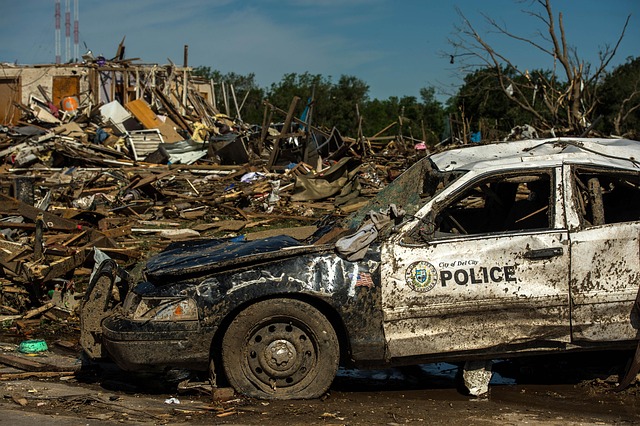San Antonio faces unique challenges post-disasters, prioritizing community resilience with strategic approaches like preventing burst pipes during winter and efficient debris management. Utilizing specialized equipment and trained personnel, the city aims to protect its infrastructure and residents from further harm. Key strategies include pipe insulation, re-routing exposed pipes, heat tape installation, and regular maintenance checks before winter. Prompt and organized debris removal enhances safety and community resilience, contributing to faster recovery and reduced secondary hazards.
San Antonio, like many cities, faces unique challenges in disaster reconstruction, particularly when it comes to debris removal. This article explores efficient strategies for managing post-disaster waste, focusing on enhancing community resilience. We delve into the specific considerations of preventing burst pipes during winter, a prevalent issue in San Antonio’s climate. Understanding these aspects is crucial for effective disaster response and long-term recovery, ensuring safer and more resilient communities. Efficient debris management techniques are key to navigating these challenges.
- Understanding Disaster Reconstruction and Debris Removal in San Antonio
- Strategies to Prevent Burst Pipes During Winter: A Focus on San Antonio's Climate
- Efficient Debris Management: Enhancing Safety and Community Resilience in Post-Disaster Scenarios
Understanding Disaster Reconstruction and Debris Removal in San Antonio

In the aftermath of a disaster, such as a severe storm or flood, San Antonio faces unique challenges in reconstruction and debris removal. Effective management of this process is crucial to ensure a swift and safe return to normalcy for residents. Disaster reconstruction involves a coordinated effort to restore damaged infrastructure, homes, and businesses, while also addressing the critical issue of debris removal. This includes the careful handling and disposal of hazardous materials, as well as the prevention of further damage, like burst pipes during winter, which can exacerbate the impact on already vulnerable communities.
San Antonio’s strategic approach to disaster reconstruction focuses on community resilience and sustainable practices. By prioritizing the safe removal of debris and implementing measures to prevent pipe bursts, the city aims to protect both its infrastructure and residents from additional harm. This involves utilizing specialized equipment, trained personnel, and efficient logistics to clear paths, assess damage, and facilitate the restoration process. Such proactive measures not only aid in recovery but also contribute to a more robust and resilient San Antonio in the face of future disasters.
Strategies to Prevent Burst Pipes During Winter: A Focus on San Antonio's Climate

In San Antonio, where winters can bring unexpected cold snaps, preventing burst pipes during this period is a top priority for both homeowners and professionals involved in disaster reconstruction debris removal. Strategizing to mitigate water damage from frozen or burst pipes involves understanding the unique climate challenges of the region. One effective approach is implementing insulation measures around pipes that are vulnerable to freezing temperatures. This can include wrapping pipes with thermal protection or using foam insulation to create a barrier against sudden temperature drops.
Additionally, homeowners and reconstruction teams should consider re-routing exposed pipes or installing heat tape in susceptible areas. Regular maintenance checks before winter sets in are crucial, allowing for quick identification and repair of any pipe vulnerabilities. These proactive measures not only protect properties from substantial water damage but also streamline the disaster reconstruction process by minimizing secondary damages caused by burst pipes during San Antonio’s winter climate.
Efficient Debris Management: Enhancing Safety and Community Resilience in Post-Disaster Scenarios

In the aftermath of a disaster, efficient debris management is paramount to enhancing safety and fostering community resilience. Prompt and organized removal operations play a crucial role in mitigating further risks, such as preventing burst pipes during winter in San Antonio. By implementing structured protocols, emergency responders can efficiently clear paths, assess structural damage, and facilitate access for essential services like water, electricity, and heating – all vital steps to ensure the well-being of affected residents.
Effective debris removal also contributes to a faster recovery process. It allows for the safe inspection and repair of damaged infrastructure, homes, and businesses. Moreover, efficient management reduces the potential for secondary hazards, such as disease outbreaks or environmental contamination, that can arise from improperly handled debris. This holistic approach not only protects individual lives but also strengthens the overall resilience of the community in the face of future disasters.
In conclusion, efficient disaster reconstruction and debris removal operations, particularly in consideration of preventing burst pipes during San Antonio’s winter, are vital for enhancing community resilience. By implementing effective strategies discussed in this article—from climate-specific prevention measures like those against freezing temperatures to optimized debris management techniques—we can ensure safer, more swift recovery processes after natural disasters. These efforts not only support the immediate needs of affected communities but also contribute to long-term sustainability and resilience in the face of increasingly frequent and severe weather events.
